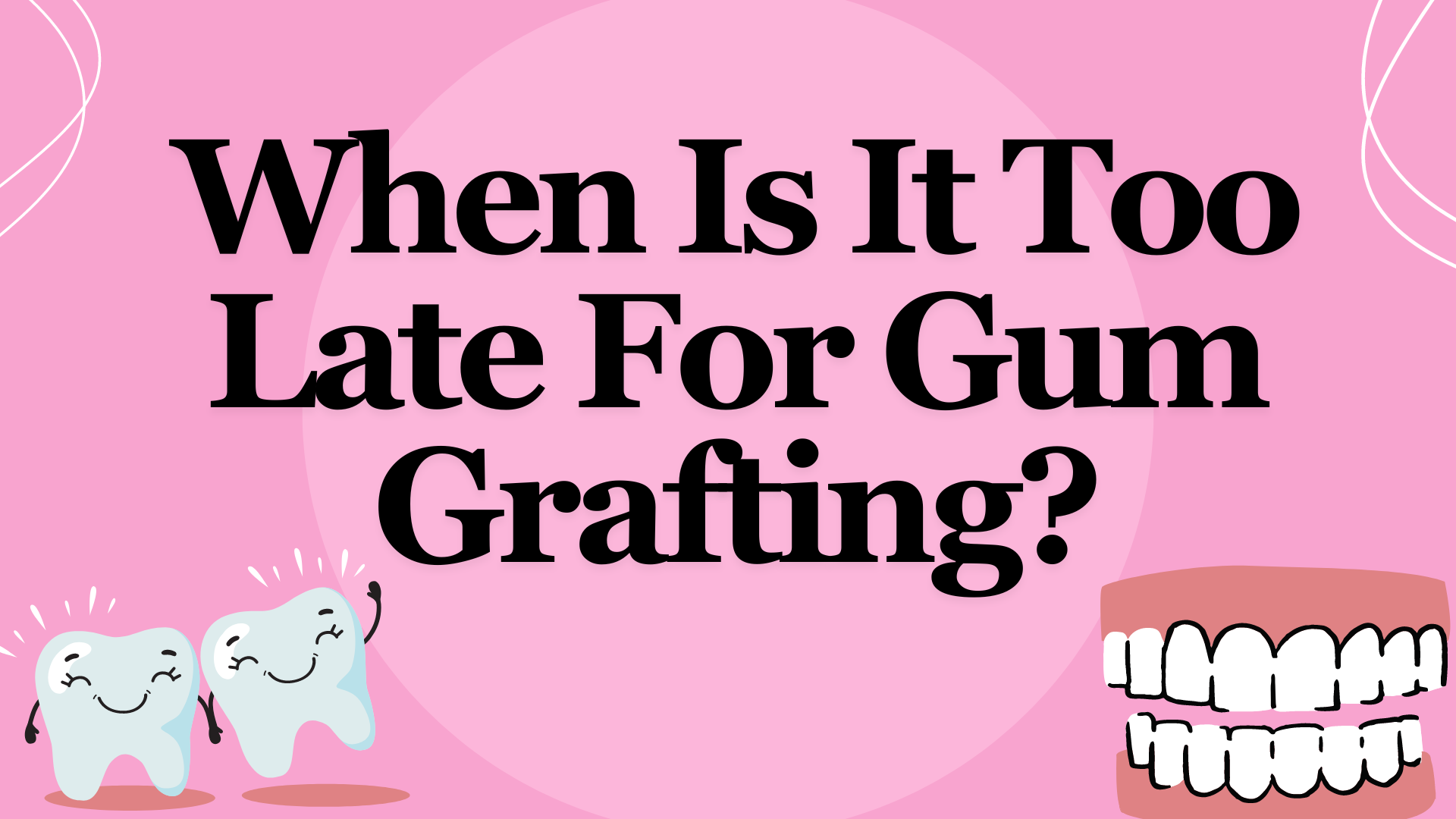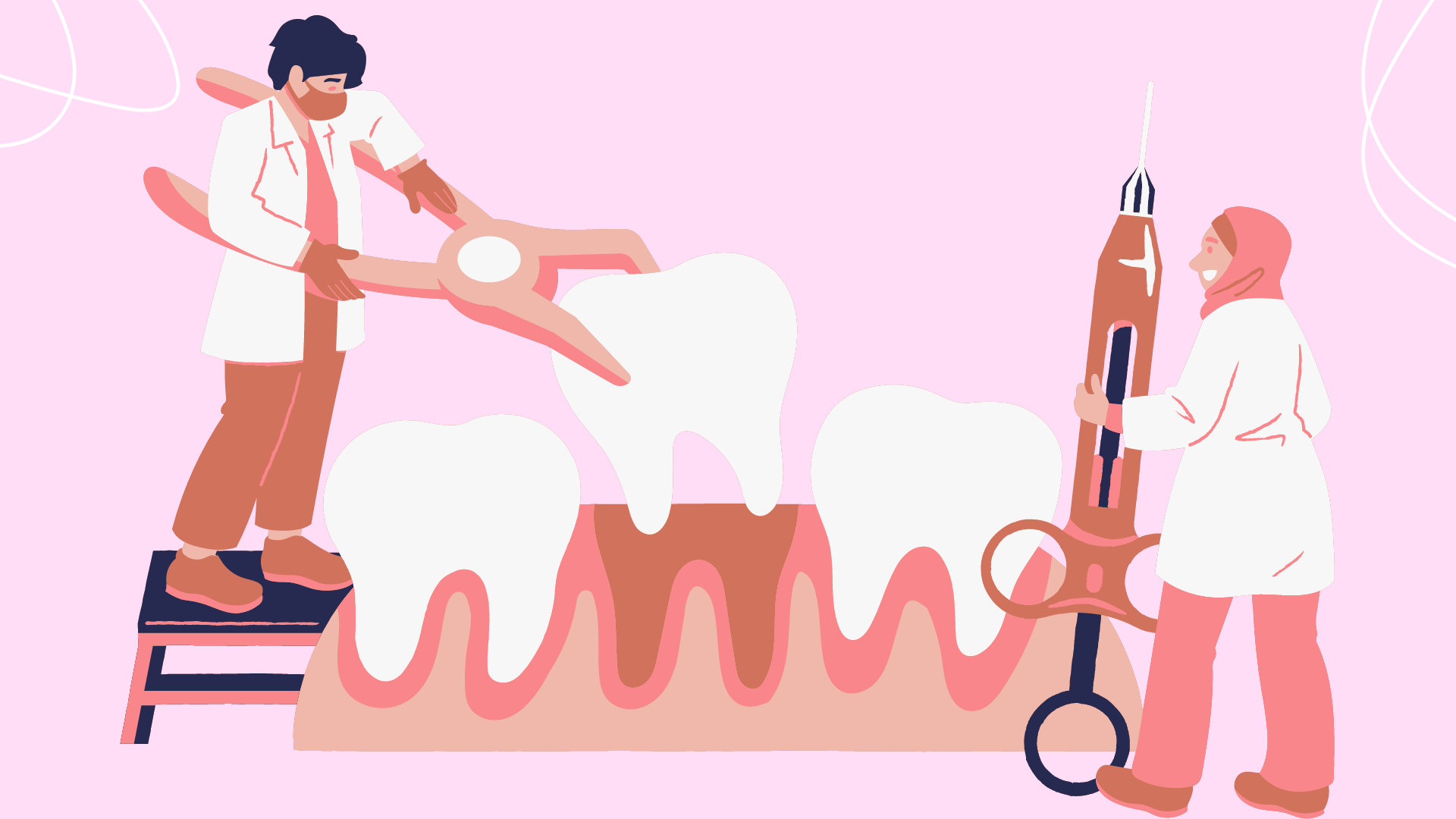
When Is It Too Late For Gum Grafting?
Gum grafting is a dental procedure used to treat receding gums, which occurs when the gum tissue surrounding the teeth wears away and exposes the tooth roots. This condition can lead to tooth sensitivity, increased risk of decay, and an unattractive smile. Gum grafting involves taking tissue from another part of the mouth, typically the palate, and attaching it to the affected area. It helps to restore gum tissue and prevent further gum recession. But when is it too late for gum grafting?
What is Gum Grafting?
Gum grafting is a dental procedure performed to treat receding gums, a condition where the gum tissue surrounding the teeth wears away, exposing the tooth roots. When is it too late for gum grafting? This procedure involves taking tissue from one part of the mouth, usually the palate, and transplanting it to the area with gum recession. The purpose of gum grafting is to restore gum tissue, protect exposed roots, reduce tooth sensitivity, improve the appearance of the smile, and prevent further gum recession. While timing is important, there isn’t a definitive point when it becomes too late for gum grafting, as the success depends on individual factors and the severity of the gum recession.
Gum Grafting – The Process
Gum grafting is a dental procedure that involves the transplantation of gum tissue to treat receding gums according to this dentist in Richmond Hill NY. When is it too late for gum grafting? The process typically begins with a thorough examination and assessment by a dental professional to determine the extent of gum recession and the suitability for grafting.
During the procedure, the dentist will numb the area with a local anesthetic to ensure patient comfort. Then, they will carefully remove a small piece of tissue from the donor site, usually the palate, and place it onto the affected area with gum recession. The graft is then secured in place with sutures or tissue adhesive.
Following the gum grafting procedure, patients may experience some discomfort, swelling, and sensitivity, which can be managed with pain medication and a soft food diet. It is important to follow the dentist’s instructions for proper aftercare to promote healing and prevent complications.
When is it too late for gum grafting? As mentioned before, the success of gum grafting depends on various factors, including the severity of gum recession. In advanced cases where there is significant bone loss or extensive gum recession, gum grafting may not fully restore the gum tissue to its original state. In such situations, alternative treatments or additional procedures may be recommended to address the underlying issues.
In summary, gum grafting is a procedure that can help restore gum tissue and treat receding gums. When considering gum grafting, it is important to consult with a dental professional who can assess your specific situation and determine the most appropriate treatment plan. While there isn’t a specific point when it becomes too late for gum grafting, early intervention is generally recommended for optimal results.

What is gum grafting?
How Much Does The Procedure Cost?
When is it too late for gum grafting? The cost of gum grafting can vary depending on various factors, including the extent of gum recession, the complexity of the procedure, geographic location, and the dentist’s expertise. It is important to consult with a dental professional to get an accurate estimate of the cost specific to your case.
Gum grafting is considered a surgical procedure, and the cost typically includes several components. These may include the initial consultation, pre-operative examinations, the surgical procedure itself, anesthesia, any necessary diagnostic tests, post-operative care, and follow-up visits. When discussing the cost with your dentist, make sure to inquire about any potential additional expenses to avoid any surprises.
In general, gum grafting can be an investment in your oral health and overall well-being. While the exact cost can vary, it is important to remember that the benefits of gum grafting can outweigh the financial considerations. Gum grafting not only helps restore gum tissue and protect exposed tooth roots but also improves oral health, reduces sensitivity, and enhances the appearance of your smile.
Why Do You Need Gum Graft?
Why Do You Need Gum Graft? Let’s dive into it. Gum grafting becomes necessary when your gums decide to take a trip in the wrong direction—receding like a reluctant tourist who forgot their sunscreen. This exposes the tooth roots, making them vulnerable to sensitivity and decay. So, when is it too late for gum grafting? Well, the good news is that there isn’t a fixed point of no return. Even if your gums have receded quite a bit, gum grafting can still come to the rescue and work its magic.
How To Know When You Need Gum Grafting
How To Know When You Need Gum Grafting? It’s not rocket science, but it’s still important to know the signs. Keep an eye out for gum recession—when your gums start pulling back like a shy turtle retreating into its shell. Tooth sensitivity, longer-looking teeth, or a wonky gumline are also red flags. But here’s the thing: when is it too late for gum grafting? Well, there’s no hard and fast rule. Even if you’ve got some serious gum recession going on, gum grafting can still swoop in like a superhero and save the day.
When Is It Too Late For Gum Grafting?
When is it too late for gum grafting? The ideal time to consider gum grafting is when you first notice signs of gum recession or receive a recommendation from your dentist. Early intervention is key to preserving gum tissue and preventing further complications. However, it’s important to note that there isn’t a specific point where it becomes too late for gum grafting. Even if you have significant gum recession, gum grafting can still be a viable option to improve your oral health and protect your teeth.
Conclusion
In conclusion, while early intervention is preferred, it’s never truly too late for gum grafting. Gum grafting is a dental procedure aimed at treating gum recession, reducing tooth sensitivity, and improving the overall health and appearance of your gums. If you notice your gums receding or experience any related symptoms, it is essential to consult with a dental professional. They will assess your condition, determine the appropriate treatment plan, and discuss the potential benefits of gum grafting. Remember, the sooner you seek treatment, the better chance you have of preserving your gum tissue and maintaining a healthy smile. When it comes to gum grafting, taking action is key, no matter the stage of gum recession.






